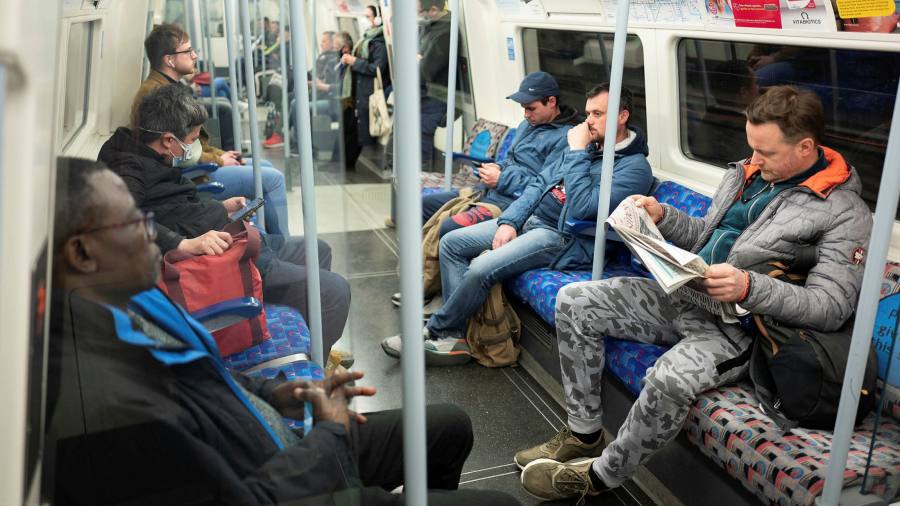People returning to work on Wednesday with no option but to use public transport are advised to wear face coverings and turn away from other passengers, as ministers were warned they had not done enough to maintain social distancing on trains and buses.
As part of the plan to ease the coronavirus lockdown in England, the government released guidance on Tuesday advising people who cannot work from home to walk, cycle or drive, if at all possible.
Those who had to use public transport were urged to try to observe the 2m social distancing rules, wear a face covering, use contactless payments and avoid rush hour.
The official guidance also suggested aiming to “start or end your journey using a station or mode of transport you know to be quieter or more direct”, by walking part of the journey.
In instances when passengers cannot avoid close contact with others on trains or buses, the government said people should “try to face away from other people, and keep the time you spend near others as short as possible”.
Grant Shapps, transport secretary, told MPs that social distancing rules meant capacity on public transport would be just 10 per cent of normal levels making it “crucial” to ensure demand was kept as low as possible.
“We continue to ask people to only go to work if they cannot do their jobs from home. That’s because, even as transport begins to revert to a full service, the two-metre distancing rule will only leave effective capacity for one in 10 passengers overall,” he said.
Unions and opposition Labour MPs criticised the guidance for failing to answer the “fundamental question” of how it would prevent a system running at hugely reduced capacity from becoming overwhelmed. They warned it could put staff and passengers at risk.
Signs emerged on Monday of renewed overcrowding on the London Underground following Boris Johnson’s speech on Sunday night when the prime minister suggested people should go back to work immediately.
Jim McMahon, shadow transport secretary, said those scenes “were unsurprising when you order a return to work with 12 hours’ notice with no official guidance on how workers can keep safe, and fail to put in place suitable measures to deal with demand. That was irresponsible and wrong.”
Manuel Cortes of the TSSA union, which represents ticket office staff on London Underground, warned “all bets are off” if public transport levels rise significantly and said only key workers should be allowed to travel again.
“If it gets crowded and dangerous we want station closures and if that doesn’t happen we’ll be telling our members to move out of harm’s way and into a safe place which will lead to station closures . . . we’ll do whatever is necessary to keep our members safe.”
Len McCluskey, general secretary of the Unite trade union, welcomed the advice but said workers should not be pressurised “to imperil themselves and others by crowding on to buses, trains or tubes”.
“Safe workplaces and safe travel to work must go hand in hand in the strategy to beating this disease. Together, they are absolutely crucial to building wider public confidence that it is right and safe to reawaken the economy, which we all want to happen in order to keep people at work and earning,” he said.
Bus drivers are among the most exposed frontline workers to the coronavirus with one of the highest mortality rates in the country, according to official data released this week.
Mr Shapps said on Tuesday that 42 Transport for London employees had died from Covid-19. It was unclear whether this was directly linked to their work.
Darren Shirley, chief executive of the Campaign for Better Transport, an advocacy group, warned that operators were “not going to be properly prepared” and capacity would still need to be severely limited if social distancing measures could be enforced.
He said increasing capacity safely would require weeks of planning and big logistical challenges, such as enforcing socially distanced queueing at stations, creating bike storage for an increase in cycling, or dealing with the crowds and delays at bus stops that would result from restricted passenger numbers.
At the weekend, Mr Shapps announced a £2bn investment to improve cycling infrastructure, and wider pavements for pedestrians.


